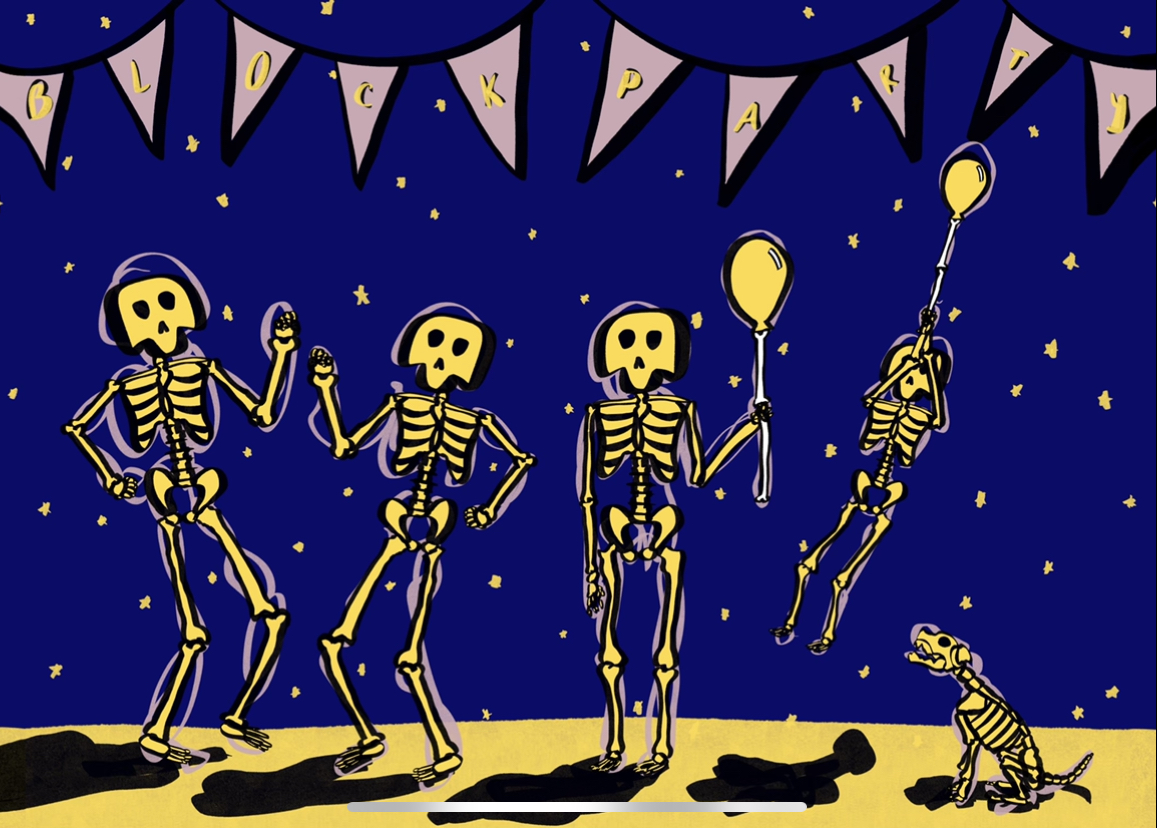Block Party Magazine rides the line between a spunky zine and a striking literary journal. It features an eclectic mix of work from an innovative community of artists and writers. Even before I interviewed its founders, fellow U of T students Isla McLaughlin and Joseph Donato, their literary baby made me excited about the future of literature.
I recently spoke to the duo about their inspiration for Block Party Magazine, the process of creating their publication, and their future endeavours. However, our chat felt less like a Zoom interview and more like popping into my neighbours’ house for tea. What follows is a taste of that tea party.
The Varsity: Can you describe how Block Party began?
Isla McLaughlin: Joseph and I went to grade school, high school, and university together. We both also submit to magazines together. The more we were talking about it, the more frustrated we were getting with literary magazines. Lit mags aren’t operating in a way that is accessible and stress-free. We wanted to make an opportunity that we, as submitters, would like to receive. We got together 14 days after our second dose of COVID-19 vaccine and talked about Block Party the whole time. Then it came to be, toward the end of summer.
TV: After you figured out what you wanted to do, how did you come up with the vibe you wanted Block Party to have?
Joseph Donato: It’s really just [about] the community. We wanted it to be very open. That is the vibe we were going for.
TV: The name is also a very important part of the vibe. How did you come up with it?
IM: We were very much looking for a name that was grounded in a place because we wanted to create a virtual community. That’s more so what we had been missing in our writing careers. We very much emerged into this writing world during the pandemic so we didn’t have a grounded space where we could share our work. We liked the idea of a block party because it’s an opportunity for neighbors to share the secret talents you never thought they’d have.
TV: So much of a community is rooted in the place where it exists. How do you think physical location ties into the journal?
JD: I was so shocked when the submissions started coming in from all over the world. It’s very international. It’s different to receive work from all over the world. Being online gives us the chance to get work from Italy, from Iran, from everywhere.
TV: In keeping with the theme of physical place, I really appreciate how you incorporate meaningful acknowledgements of Indigenous culture on your website. Tell me about how you came to include this?
IM: We want to build a land acknowledgement policy but again, we’re looking to provide a compensated opportunity for an Indigenous person to do this. It’s not our place to speak over anyone and we want to make sure that if we’re engaging with it, we’re doing it properly.
TV: Interesting! That would take financial compensation. How would Block Party change with additional funding?
IM: Our goal for grants would be to create long-term editorial positions for marginalized writers. We’re working to rectify the long standing inequities in the editorial field. There’s huge issues with lit magazines only creating volunteer opportunities for marginalized writers. We do want to create substantial, well compensated, long-term skill building opportunities for marginalized writers.
TV: How do you think the magazine will change as the years go by?
JD: We hope that it grows and that in the fall we can provide a physical copy of the magazine because it would be a special thing to own if you’re a contributor. I also hope that we are able to give a platform to more people.
IM: In the new year, we want to publish nonfiction on a rolling basis. After university, we hope to create other publications: chatbooks and zines. They’re very much community-based and smaller-scale in the literary world, but we like it that way. They’re relics, like these little glimpses into a community.
Ultimately, Block Party Magazine fosters the acceptance and comfort that the sometimes harsh literary world has been needing. The publication’s first issue, “Body” — developed in collaboration with Brand Strategist Abigail Wiley and collaborator Madeline Frenchette — was one in which bodies told stories “in all their pain, shame and glory.” Its next issue, “Bloom” — which will be released in March 2022 — promises to capture “growth, change, warmth, and new beginnings.”
This interview has been edited for length and clarity.
Disclaimer: Isla McLaughin and Joseph Donato are contributors for The Varsity.


